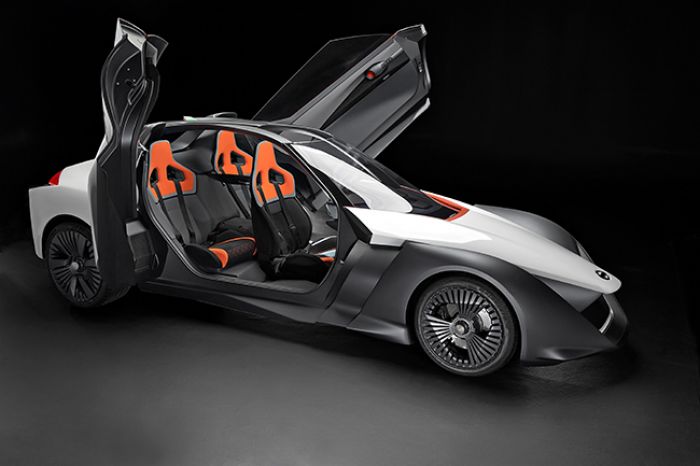Nissan Motor Co., Ltd unveiled the working prototype of its futuristic BladeGlider vehicle in Rio de Janeiro, with Williams Advanced Engineering playing an important role in the car’s creation as Nissan’s technical partner, combining zero-emissions with high-performance in a revolutionary sports car design. Two BladeGliders will be presented in Rio de Janeiro in August. One will be on static display in Rio while the second will be offering dynamic rides to media and VIPs.
The vehicles, developed from concept cars first shown at the Tokyo Auto Show in 2013, have arrived in Brazil to symbolize future technologies that will combine Intelligent Mobility, environmentally-friendly impact and sports-car driving capabilities.
With the BladeGlider, Nissan’s vision was for an agile, efficient EV that would provide new dimensions of driving fun and excitement - a car that would ‘glide’, thanks to the near-silent performance of its electric powertrain and aerodynamic shape.
The demonstration models feature an advanced chassis configuration with a narrow front track and wider rear track for optimum aerodynamic efficiency and handling stability.
High-waisted, rear-hinged dihedral doors provide a dramatic entry and exit to the cabin. The open roof of BladeGlider is reinforced with an integrated roll-over protection structure, providing the exhilaration of an open-topped race car with the safety of a coupé.
Wheel-mounted controls for BladeGlider’s systems feed into an advanced display showing speed, state of battery charge, regeneration mode and torque map. Flanking the central display are two screens, with the images of rear-view cameras mounted just behind the front wheels. An alternative to door-mounted mirrors, this dual screen design improves the aerodynamic efficiency of BladeGlider. The driver sits in arrowhead formation slightly in front of two passengers, who enjoy extended legroom. The view for all occupants is panoramic, thanks to the seamless cockpit windscreen.
Power is 100 percent electric, with exceptional powertrain performance delivered by Nissan’s technical partner for the BladeGlider project, UK-based Williams Advanced Engineering. Maximum speed of the demonstration models is in excess of 190km/h*, with 0-100km/h taking less than 5 seconds*. The rear wheels’ drive is provided by two 130kW electric motors – one for each wheel.
The system features torque vectoring, controlling the torque delivered to the driven wheels, improving the handling even further. With torque vectoring, if the car starts to understeer, it automatically sends more torque to the outside wheel to restore the handling balance.
Power is supplied by a high performance five module lithium-ion 220kW battery. Bespoke cooling systems have been developed for both the battery and the motors.
Speaking about the project Craig Wilson, Managing Director of Williams Advanced Engineering, said; “At Williams Advanced Engineering we like to use our expertise in automotive engineering to help customers push the boundaries with their new products. This is exactly what Nissan is doing with BladeGlider, a real-life study that shows the potential of EV cars in terms of styling and performance. We were delighted to be involved with the project and Nissan’s forward-thinking approach to EVs.”

04 August 2016
Nissan BladeGlider, Cutting-Edge E-Mobility
by

